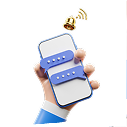 blog.by Nadine Mohamed
blog.by Nadine Mohamed
As children grow, their world expands beyond the home into schools, playgrounds, sports teams, and online communities. Alongside this expansion comes the growing influence of peers. While friendships and social interactions are essential to development, they also bring challenges—especially peer pressure. Learning to navigate social dynamics and resist negative pressure is a crucial skill that supports a child’s confidence, decision-making, and emotional well-being.
Children and teens face pressure in many forms—from subtle encouragement to behave a certain way, to direct challenges that go against their values or comfort zone. As parents, our role isn’t to shield them from every difficulty but to prepare and empower them to handle these challenges with self-respect, assertiveness, and clarity.
- ● Peer pressure can influence behavior, values, and identity
- ● Children need guidance and tools to respond confidently to social stress
- ● Supportive adults play a key role in shaping how children navigate peer dynamics
- ● Building self-esteem and communication skills can reduce vulnerability to pressure
Understanding Peer Pressure
Peer pressure occurs when individuals are influenced by their peers to change their attitudes, values, or behaviors to conform to group norms. This pressure can be positive, neutral, or negative.
- ● Positive peer pressure: Encourages healthy behavior (e.g., studying, joining a sport, being inclusive)
- ● Neutral peer pressure: Involves preferences or trends (e.g., clothing style, music choices)
- ● Negative peer pressure: Promotes risky or harmful behavior (e.g., lying, cheating, substance use)
Children may feel pressure to fit in, avoid judgment, or gain social approval. Without the right tools, they may act against their better judgment to avoid conflict or rejection.
Types of Peer Pressure Children Face
Peer pressure isn’t always obvious. It can be direct or indirect, verbal or nonverbal, and it can affect children of all ages.
- ● Spoken pressure: Friends ask directly, “Everyone’s doing it—why not you?”
- ● Unspoken pressure: The desire to fit in leads a child to imitate behavior without being asked
- ● Social media pressure: Seeing others post perfect images, risky behavior, or exclusionary messages
- ● Groupthink: The desire to agree with the group to avoid standing out or being labeled “difficult”
Recognizing these different types helps children understand that not all influence is overt or easy to identify.
Why Children Are Vulnerable
Children and teens are still developing their identities and decision-making abilities. Their brains are wired to seek acceptance and belonging, especially during adolescence.
- ● The need for approval often outweighs the fear of consequences
- ● Children may lack experience or language to assert themselves
- ● Fear of being left out or teased can override inner values
- ● Social media amplifies pressure to be seen, liked, and followed
By understanding the reasons behind their vulnerability, parents can respond with empathy, not judgment.
Signs Your Child May Be Struggling with Peer Pressure
Children won’t always tell you when they feel pressured. Look for behavioral or emotional clues that something is off.
- ● Sudden changes in behavior, clothing, or interests
- ● Increased secrecy or withdrawal from family
- ● Avoiding old friends in favor of new ones with different values
- ● Decline in academic performance or increased anxiety
- ● Reluctance to attend school or social events
- ● Making decisions that seem out of character
When you notice these signs, approach your child with curiosity and compassion rather than accusation.
How to Build Resistance to Peer Pressure
The best defense against peer pressure is a strong internal compass. Children need a clear sense of self, values, and boundaries to navigate social situations confidently.
- ● Teach your child to identify their personal values and “non-negotiables”
- ● Help them role-play common peer pressure scenarios and possible responses
- ● Teach assertive communication: clear, respectful, and confident
- ● Reinforce that saying “no” is a strength, not a weakness
- ● Encourage friendships with peers who share positive values
The more your child practices resisting pressure in low-stakes situations, the more prepared they’ll be when the stakes are higher.
Encourage Open Conversations
Creating a safe space for ongoing conversations is one of the most effective ways to support your child socially.
- ● Ask questions like, “Have you ever felt pressured by friends?” or “What would you do if someone dared you to do something you weren’t comfortable with?”
- ● Avoid overreacting or lecturing—stay calm and nonjudgmental
- ● Share stories from your own childhood or mistakes you’ve learned from
- ● Use current events, shows, or books as conversation starters about peer behavior
- ● Listen more than you talk—validate their concerns and experiences
When children know they can talk to you without fear of shame or punishment, they’re more likely to come to you when it matters most.
Teach Assertive Communication Skills
Children often say “yes” when they want to say “no” because they don’t know how to express themselves. Assertiveness is a learned skill.
- ● Teach the difference between passive (“Okay, I’ll do it”), aggressive (“Get lost!”), and assertive (“No thanks, I’m not into that”) responses
- ● Practice scripts: “I don’t want to do that,” “That’s not for me,” “Let’s do something else”
- ● Teach body language: eye contact, strong voice, confident posture
- ● Encourage your child to stand up for others, not just themselves
Confidence grows with practice. Help your child rehearse and praise their courage when they assert themselves.
Strengthen Self-Esteem
Children with strong self-worth are less likely to rely on peer approval for validation. Help them build a strong internal sense of identity.
- ● Celebrate their unique qualities, skills, and strengths
- ● Provide unconditional love and support, regardless of mistakes
- ● Praise effort and integrity, not just outcomes or popularity
- ● Encourage passions and hobbies that build mastery and confidence
- ● Help them set and achieve personal goals outside peer influence
When children feel secure in who they are, they are better equipped to resist conformity that conflicts with their values.
Monitor and Discuss Social Media Use
Social media can be a source of connection—but it can also intensify peer pressure and comparison. Stay involved in your child’s digital life.
- ● Set healthy boundaries for screen time and app use
- ● Discuss the “highlight reel” nature of online content
- ● Encourage critical thinking: “Does that post feel real or exaggerated?”
- ● Teach them to recognize and report cyberbullying or peer pressure online
- ● Be curious, not controlling—engage with their online world together
Digital literacy is part of modern parenting. Equip your child to navigate social media with awareness and self-respect.
Help Them Build a Support Network
Positive peer relationships serve as a buffer against negative pressure. Help your child cultivate friendships with like-minded peers.
- ● Encourage extracurriculars, clubs, or teams that align with their values
- ● Help them identify and strengthen existing healthy friendships
- ● Teach what a good friend looks and feels like
- ● Role-model healthy relationships in your own life
Surrounding children with supportive peers and adults provides encouragement and reduces the influence of toxic dynamics.
Know When to Intervene
While children need space to solve their own problems, there are times when parental intervention is necessary.
- ● If your child is being bullied, isolated, or pressured into risky behavior
- ● If peer dynamics are leading to anxiety, depression, or self-harm
- ● If you suspect illegal or dangerous activity (e.g., substance use, unsafe behavior)
- ● If your child’s behavior or mood changes dramatically
Seek support from school counselors, mental health professionals, or trusted mentors. Intervening early can prevent long-term emotional harm.
Equipping Your Child for Social Success
Peer pressure and social challenges are a natural part of growing up—but they don’t have to define your child’s path. With support, open dialogue, and confidence-building tools, your child can learn to navigate their social world with strength and integrity.
- ● Teach values, assertiveness, and empathy
- ● Encourage reflection and critical thinking
- ● Create a home where questions and conversations are always welcome
- ● Celebrate the courage to stand alone when necessary
In a world that often urges conformity, helping your child stay true to themselves is one of the greatest gifts you can give.
Are you ready to get started and study abroad? Just browse through more than 110,000 diverse programs worldwide, Educatly offers a diverse array of educational opportunities tailored to your interests and career goals.
Signing up is easy! Simply create a profile and explore our extensive database to find the perfect program for you. Whether you're drawn to renowned universities in bustling cities or serene campuses in scenic locations, Educatly ensures you'll find a match that suits your aspirations.
To receive personalized guidance every step of the way, schedule a free consultation with one of our experienced educational advisors. They're dedicated to helping you navigate the application process, understand visa requirements, and secure scholarships or financial aid, ensuring you access top-tier educational opportunities with confidence.




 blog.feedback.yes
blog.feedback.yes blog.feedback.no
blog.feedback.no